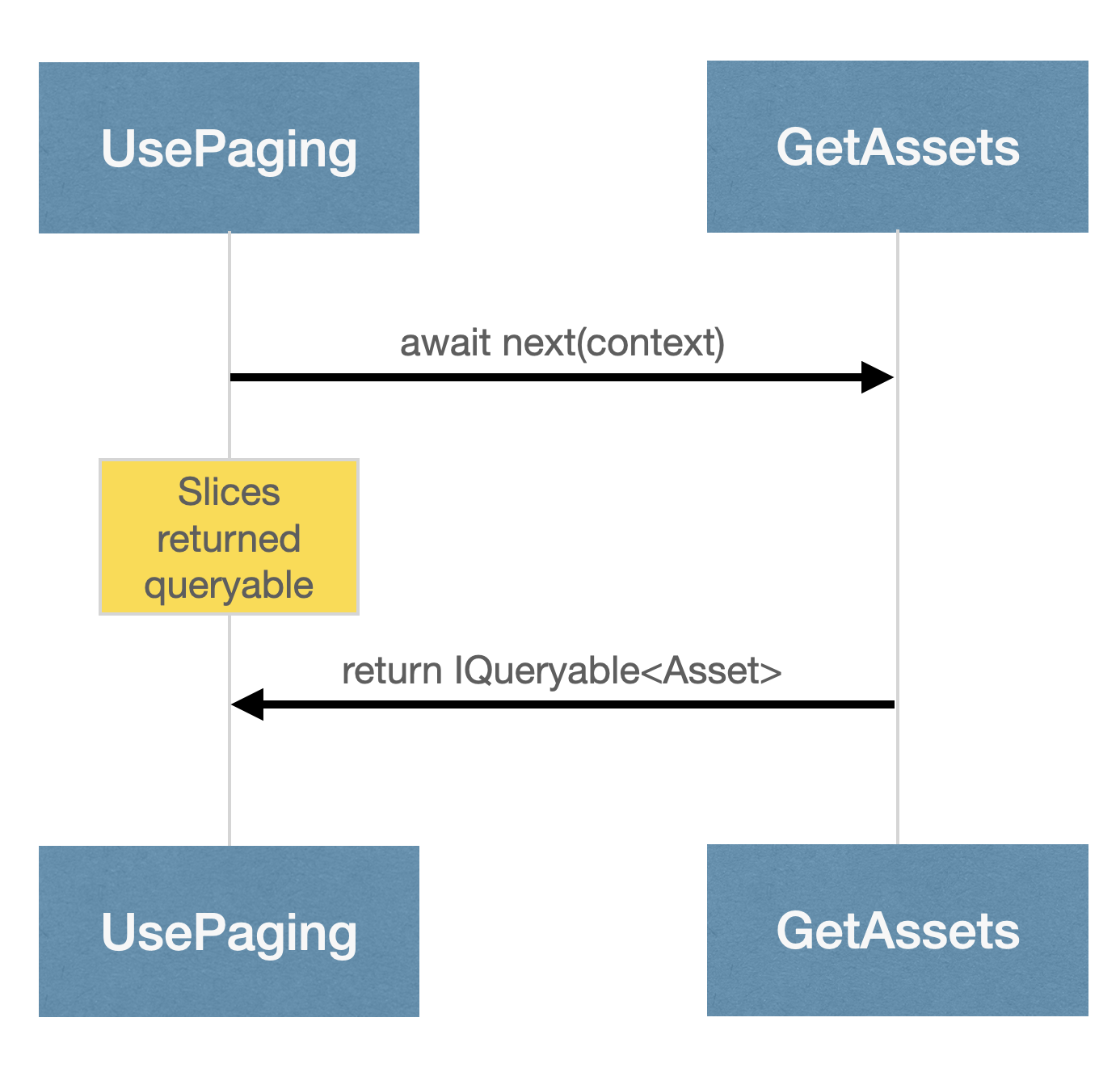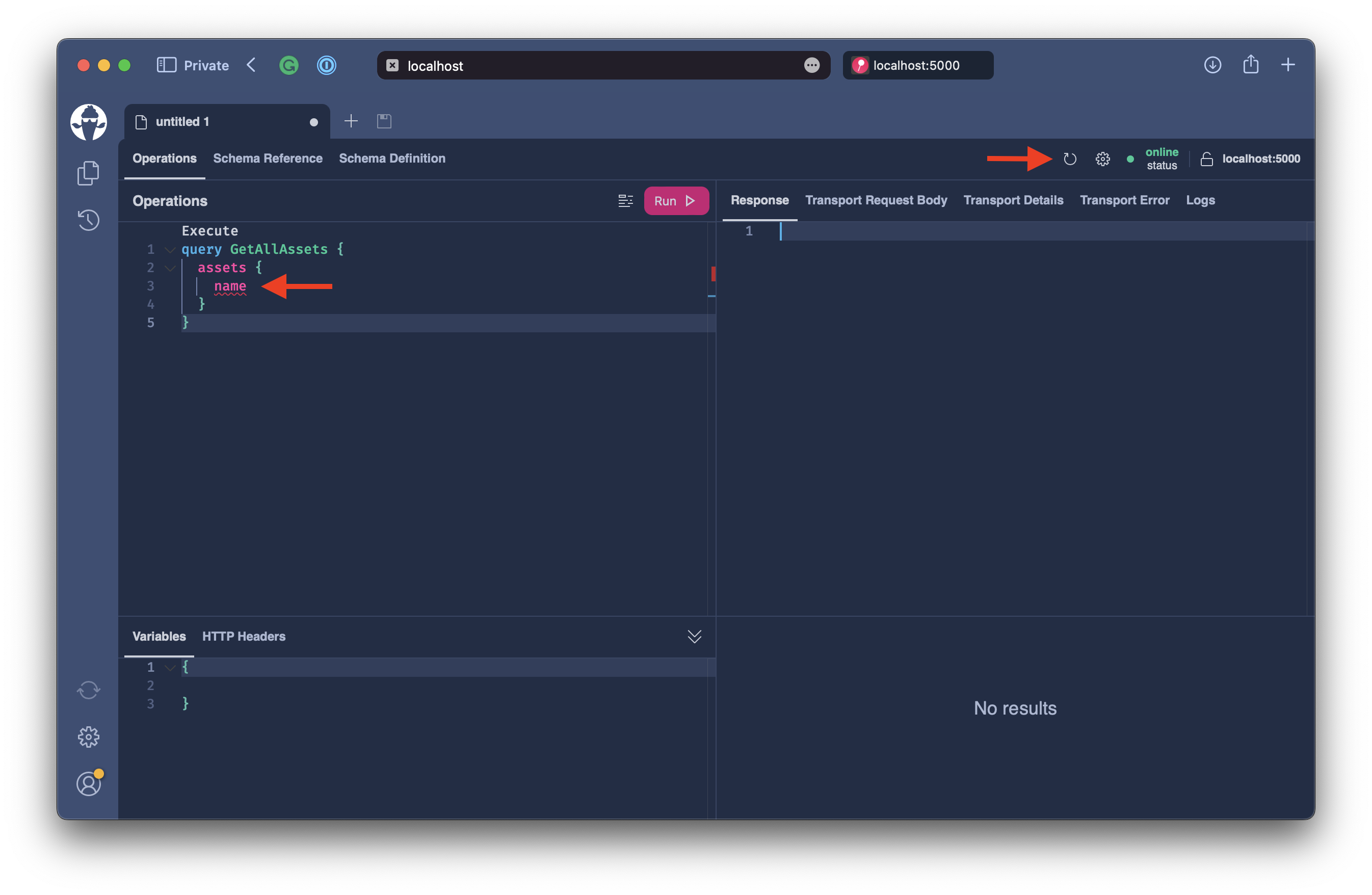Pagination
In the first part, we exposed the Asset entity through GraphQL. Fetching the assets field would return all of the elements in the table, which would not scale for a real-world application.
With Hot Chocolate, we can use the default paging middleware, which will rewrite the queryable to only fetch a segment of the asset table.

To use the paging middleware, annotate your GetAssets resolver with the UsePagingAttribute.
namespace Demo.Types;
public class Query
{
[UsePaging]
public IQueryable<Asset> GetAssets(AssetContext context)
=> context.Assets.OrderBy(t => t.Symbol);
}
If needed, you can specify paging settings on the UsePagingAttribute for a specific field, or we can set global defaults on the GraphQL configuration.
builder.Services
.AddGraphQLServer()
.AddTypes()
.RegisterDbContext<AssetContext>()
.SetPagingOptions(new PagingOptions
{
DefaultPageSize = 5,
MaxPageSize = 50,
IncludeTotalCount = true
});
Now restart your server and refetch the schema with Banana Cake Pop.

The earlier query we formulated shows errors because the paging middleware has rewritten the type structure.
Let's change the query to the following and execute it.
query GetAllAssets {
assets {
nodes {
name
}
}
}
We can now define how many items we want to fetch by passing in the first argument.
query GetAllAssets {
assets(first: 2) {
nodes {
name
}
}
}
To get information about the current page can fetch the PageInfo.
query GetAllAssets {
assets(first: 2) {
nodes {
name
}
pageInfo {
hasNextPage
hasPreviousPage
}
}
}
Further, to navigate between pages, we need to use the cursors of the exposed edges. For convenience, we can get the cursor of the first and last element in our list through the PageInfo.
query GetAllAssets {
assets(first: 2) {
nodes {
name
}
pageInfo {
hasNextPage
hasPreviousPage
startCursor
endCursor
}
}
}
In our dataset, we can pass the endCurser to the after argument of our assets field to move forward.
query GetAllAssets {
assets(first: 2, after: "MA==") {
nodes {
name
}
pageInfo {
hasNextPage
hasPreviousPage
startCursor
endCursor
}
}
}
A curser defines the position of an element within a dataset. The position is usually not represented by an index but by an id, allowing one to pinpoint a specific object within the dataset.
Summary
In the second part, we have learned how to expose a list of database entities through GraphQL. We also explore resolver dependency injection and how to register the DbContext with the execution engine. Further, we dabbled our feet in cursor-based pagination.